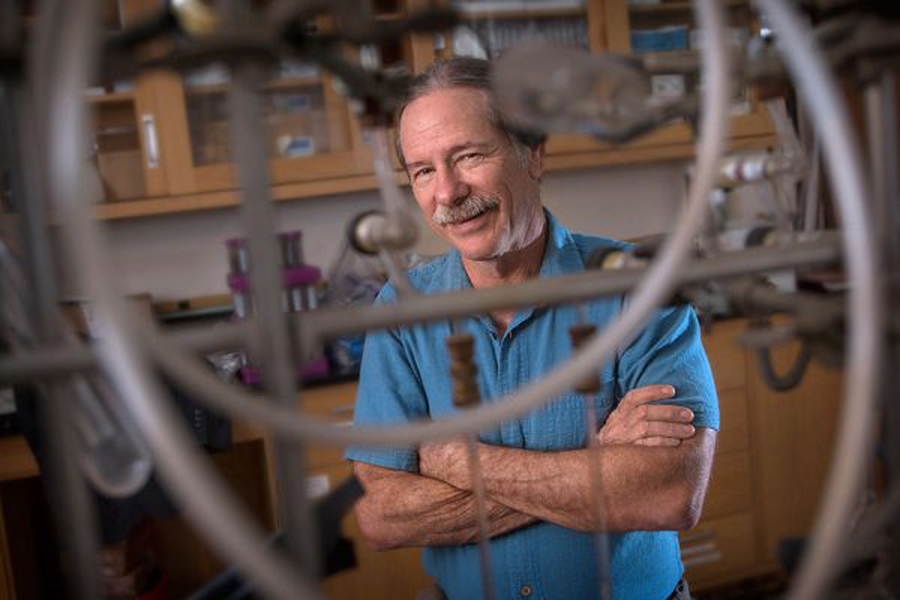
Peatlands, which make up 3 percent of Earth’s total land area, are known by a number of names — moors, mires, bogs, swamps and portions of permafrost tundra. They also store a significant amount of the Earth’s carbon.
A research team from Florida State University and Georgia Institute of Technology are paying close attention to these complicated systems because they’ve found that the warming Earth is stimulating complex ecosystem changes with the end result of even more greenhouse gases being released into the air.
The team’s findings — one piece of a larger project studying peatland warming led by Paul Hanson of the U.S. Department of Energy’s Oak Ridge National Lab (ORNL) — were published today in the journal Proceedings of the National Academy of Sciences.
FSU environmental chemist Rachel Wilson, the study’s lead author, said that warming causes more greenhouse gases to be emitted into the atmosphere because of a cascading effect and those higher emissions, if unabated, are likely to continue long-term.
“First, the plant community responds to warming and produces more sugars,” Wilson said. “Those sugars are then fuel for the anaerobic microorganisms that produce carbon dioxide and methane as their respiration products. This suggests that the increase in methane production at higher temperatures is not a transient effect but is likely to persist over time, worsening the climate crisis by adding greenhouse gases to the atmosphere.”
Researchers are particularly concerned about feedback loops through which a warming climate accelerates greenhouse gas production from peatlands, which then warms the climate further. Peatlands are among the largest carbon banks on Earth’s surface, holding as much carbon dioxide as the pre-industrial atmosphere. The peatland stored carbon is climate vulnerable.
“As peatlands warm, more of the carbon stored there becomes susceptible to decomposition by microorganisms, which then gets released as carbon dioxide and, even more troubling, methane,” Wilson said.
Robert O. Lawton Distinguished Professor and John Widmer Winchester Professor of Oceanography Jeff Chanton, a world-renowned expert on methane, directs FSU’s part of the project and has been involved since 2012.
“Methane currently drives about 25 percent of the ‘climate forcing,’ or influence on the atmosphere that traps heat and warms the earth, compared to carbon dioxide, which drives most all of the rest,” Chanton said. “But methane is a stronger greenhouse gas than CO2 by a factor of 30. The research shows that with warming conditions, the peatland carbon cycle will change from one of sequestration to emissions with an increasing methane effect. It’s doubly bad.”
Georgia Tech microbiologist and associate chair for research Joel Kostka, who co-led the study, said that this unpleasant outcome is attenuated by the extreme conditions found in peat bogs around the world.
“Although most peatlands are in northern regions, which are undergoing some of the most rapid warming on the planet, we’re talking about generally cold, acidic soils where there’s no oxygen,” Kostka said. “Methanogens grow really slowly under these extreme conditions. We do see their activity increasing with warming, but they’re not yet growing that fast.”
Together, the research group travels to northern Minnesota up to four times a year to collect samples at the ORNL-managed facility. FSU’s researchers analyze peat for belowground carbon dioxide and methane concentrations and isotopes while Kostka’s team studies samples with advanced microbiological methods.
Wilson also was awarded a grant to use Environmental Molecular Sciences Laboratory facilities at the Department of Energy’s Pacific Northwest National Laboratory, which allowed her to have samples analyzed using a variety of cutting-edge environmental techniques.
With the help of Malak Tfaily, an FSU alumna who is now an assistant professor at the University of Arizona, they used the lab’s high-resolution mass spectrometry technique, FTICR-MS, which was largely pioneered at the FSU-headquartered National High Magnetic Field Laboratory.
The FSU and Georgia Tech research is one part of the much larger Spruce and Peatland Responses Under Changing Environments experiment, or SPRUCE, to study peatland climate feedbacks. Overseen and directed by ORNL’s Hanson, a peatland in the northern Minnesota Marcell Experimental Forest is experimentally warmed to various temperatures inside of large enclosures. Both the air and peat are warmed to temperatures that simulate warmer climates.
Scientists from several DOE national laboratories including ORNL, the U.S. Department of Agriculture’s U.S. Forest Service, and a number of U.S. and international universities are collaborating to determine changes in vegetation, physical characteristics of the peat, and refining climate models to better capture how these climate-critical ecosystems respond to warming conditions.
Jerry Grillo from Georgia Institute of Technology contributed to this article.




